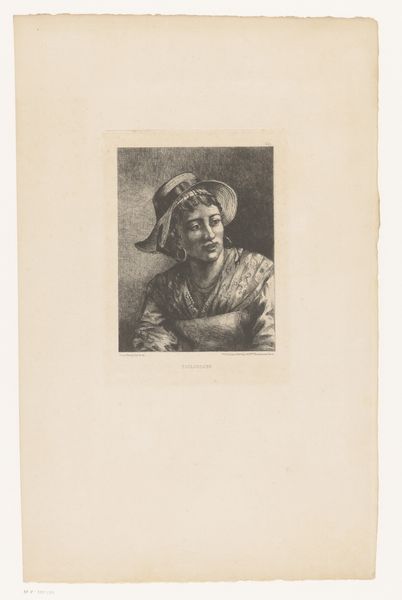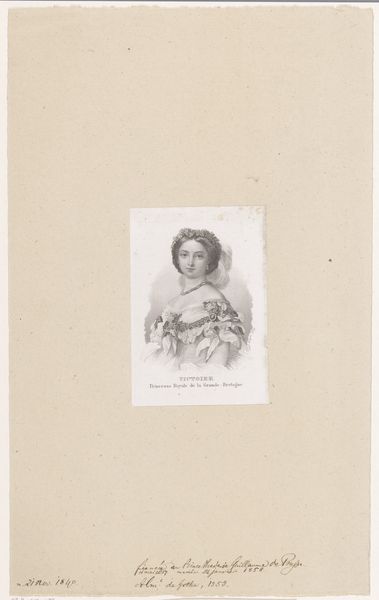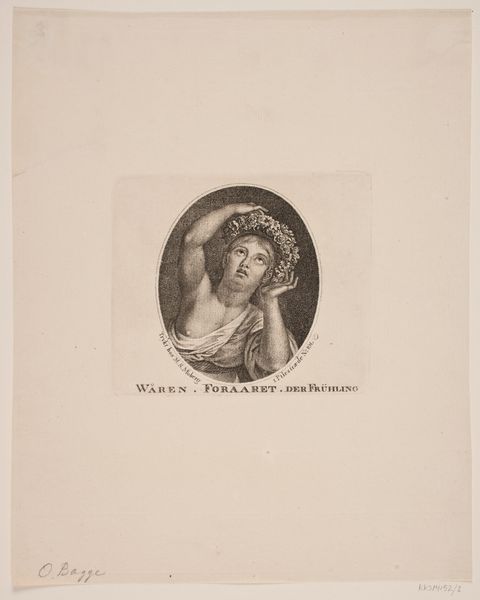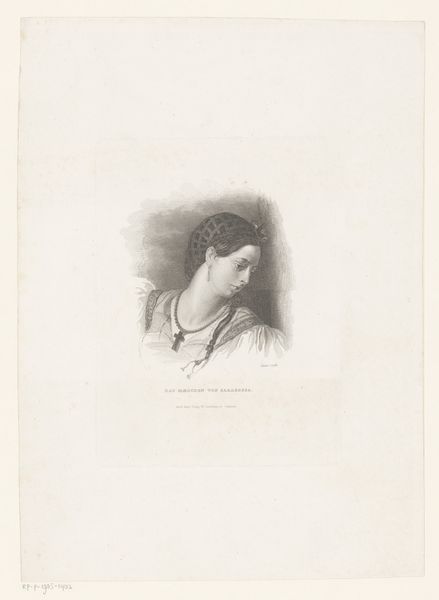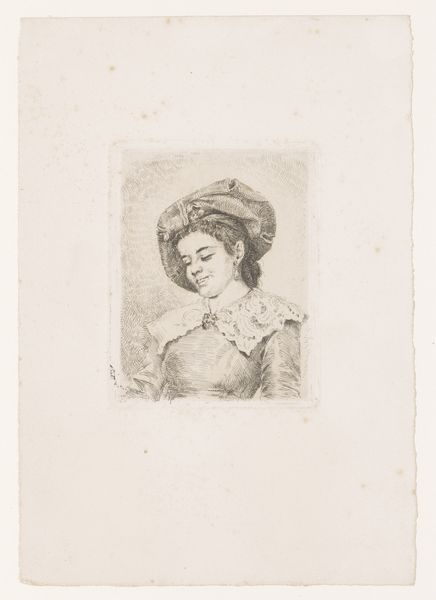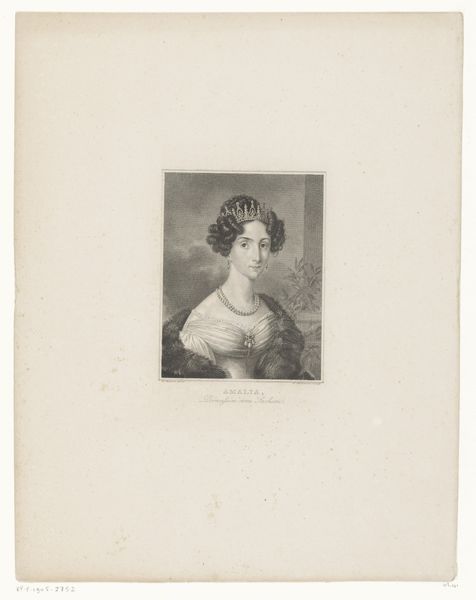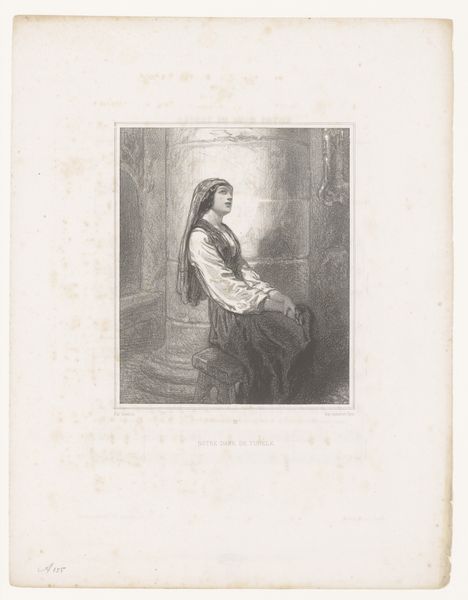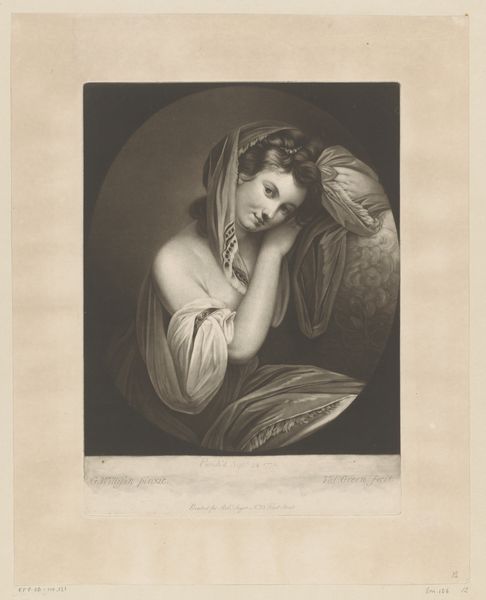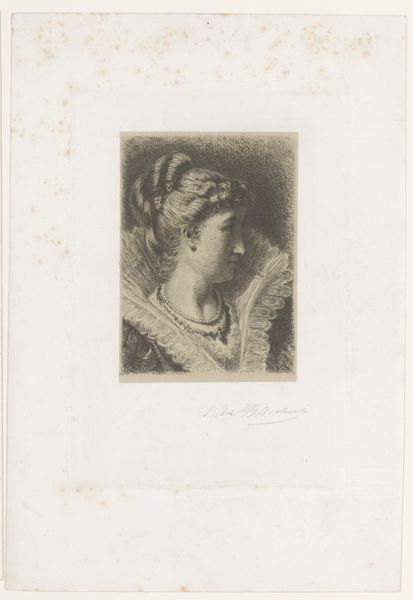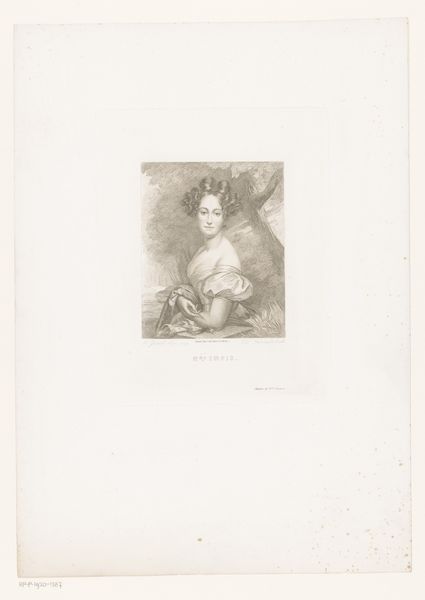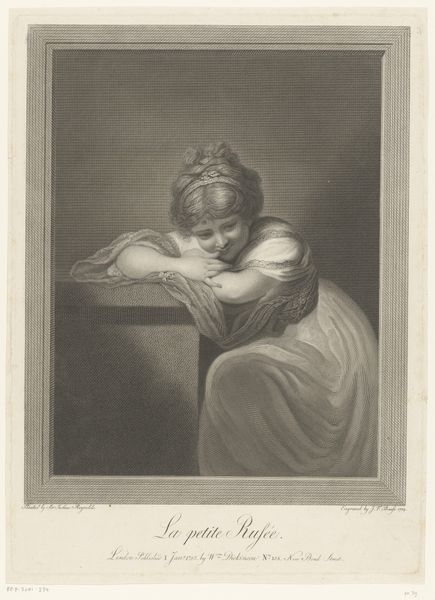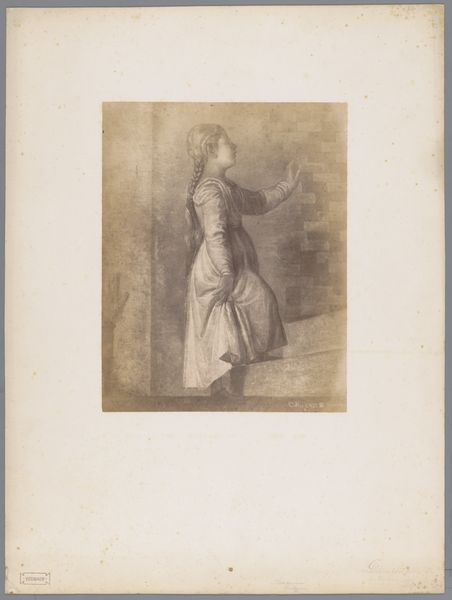
print, engraving
#
portrait
# print
#
figuration
#
romanticism
#
engraving
Dimensions: height 292 mm, width 215 mm
Copyright: Rijks Museum: Open Domain
Curator: Let’s discuss this print titled "Maagd Maria," an engraving dating to 1832. Editor: It's a study in gentle melancholy, isn’t it? The subject's lowered gaze and the soft shading evoke a feeling of quiet contemplation or even sorrow. It really leans into the romantic ideal of female sensibility. Curator: Indeed. While the title translates directly to Virgin Mary, prints like these, and this is figuration in a portrait style, often circulated as devotional objects intended to evoke piety, but also domesticity. It suggests, even for a sacred figure, a sort of approachable femininity. Editor: Absolutely. Her posture is particularly telling; the downcast eyes and slightly tilted head are classic visual cues of both humility and submission. This posture can be traced to other iconographic figures, a long cultural obsession with feminine ideals through religious symbolism. Is it the Virgin, or just idealized femininity on display? Curator: A productive question. By the 1830s, we see a rise in the reproduction of images that were much more accessible to the emerging middle classes. So, prints like this allowed for personal, at-home displays of piety which reinforced a very particular narrative of female virtue that was crucial to the social order. Editor: And it worked beautifully. Even today, it has an immediate and visceral appeal that tugs at very familiar emotional chords. There is something profoundly universal about this type of image that transcends its religious framework and the culture of origin, the mother image. Curator: I agree. Looking closely at its production date within the Romanticism era, and its mass production qualities, we gain insight to both private piety, and broader public dissemination of imagery of women's virtue at the time. Editor: It's an example of how an image, even one rooted in religious iconography, could so powerfully express complex social and emotional values. Curator: Precisely. By exploring its historical and social dimensions we unlock new perspectives on its role.
Comments
No comments
Be the first to comment and join the conversation on the ultimate creative platform.

